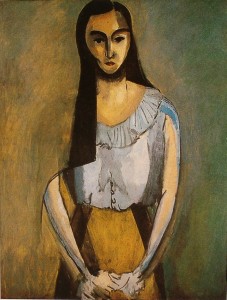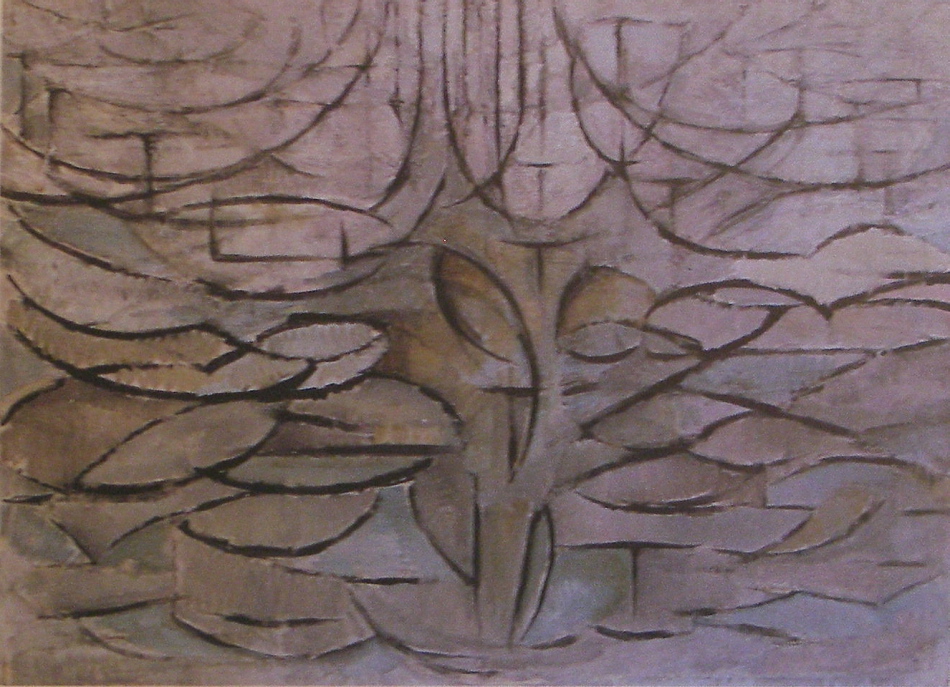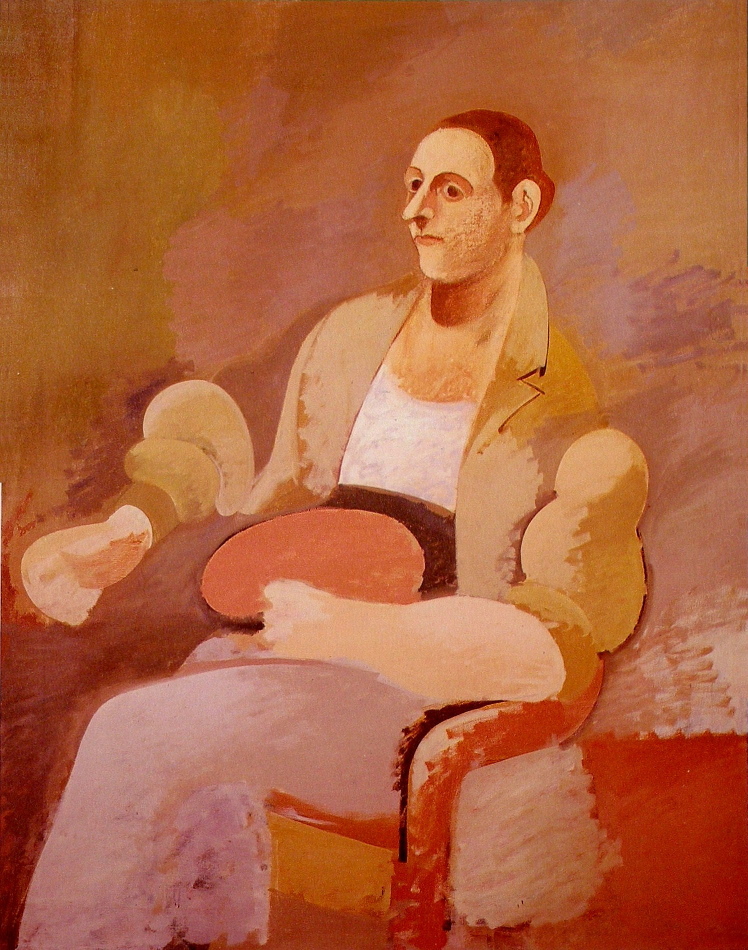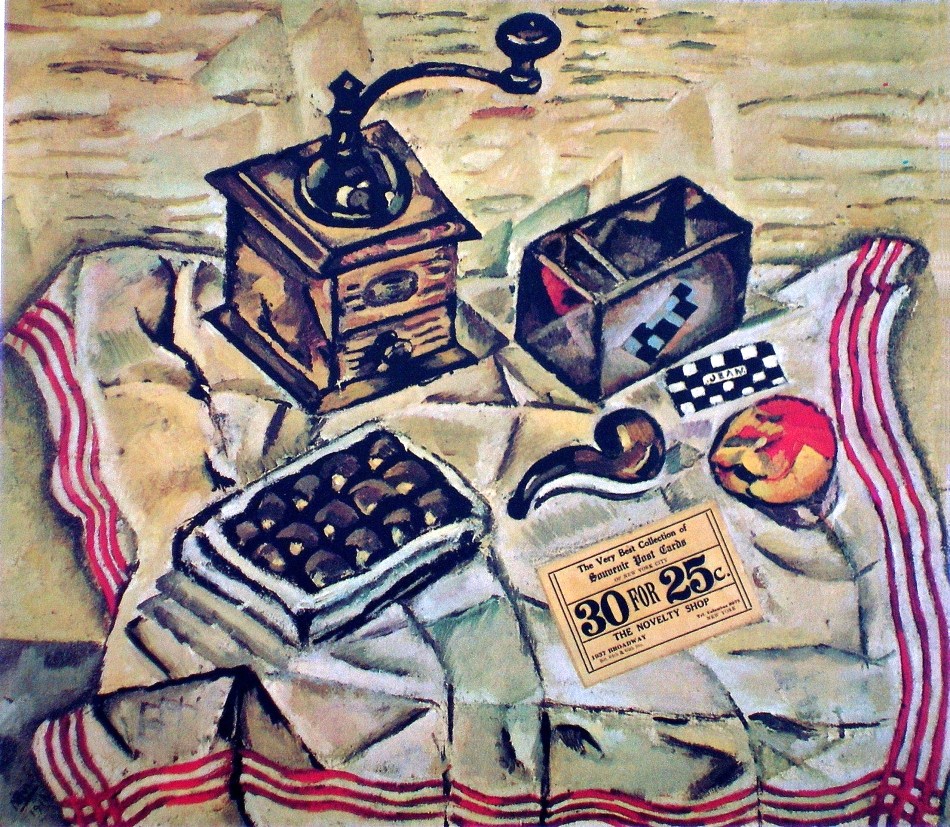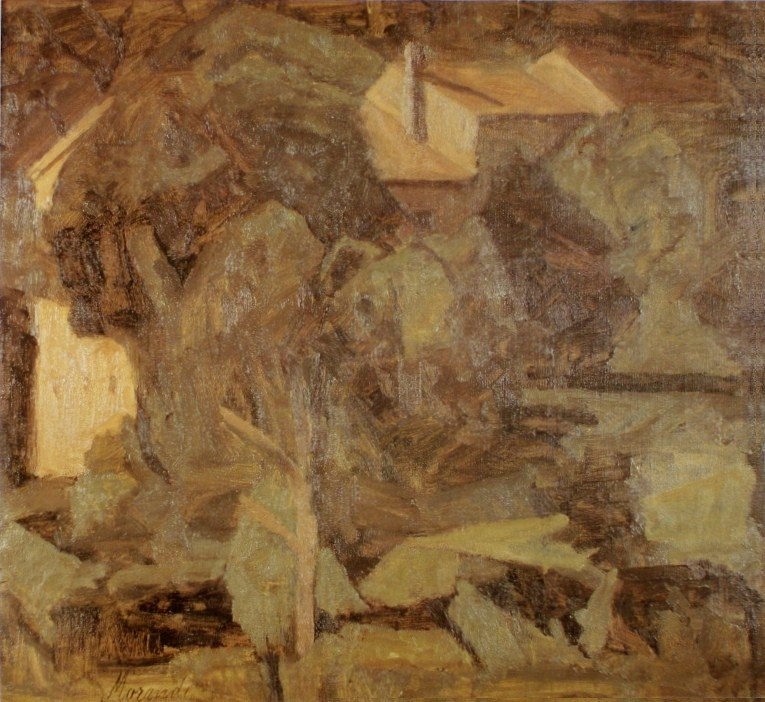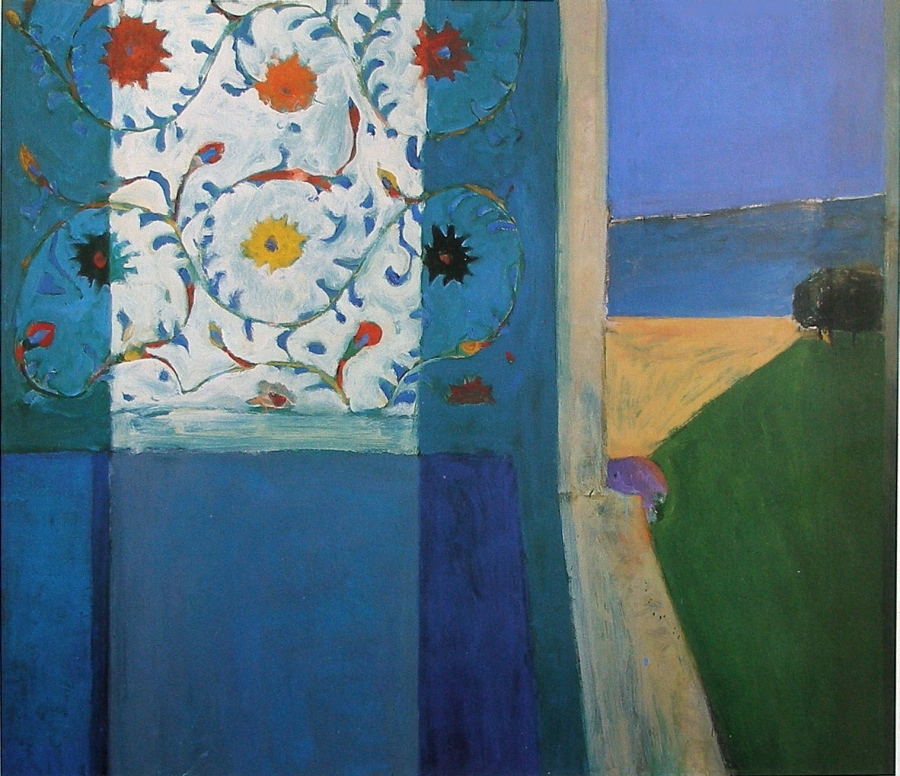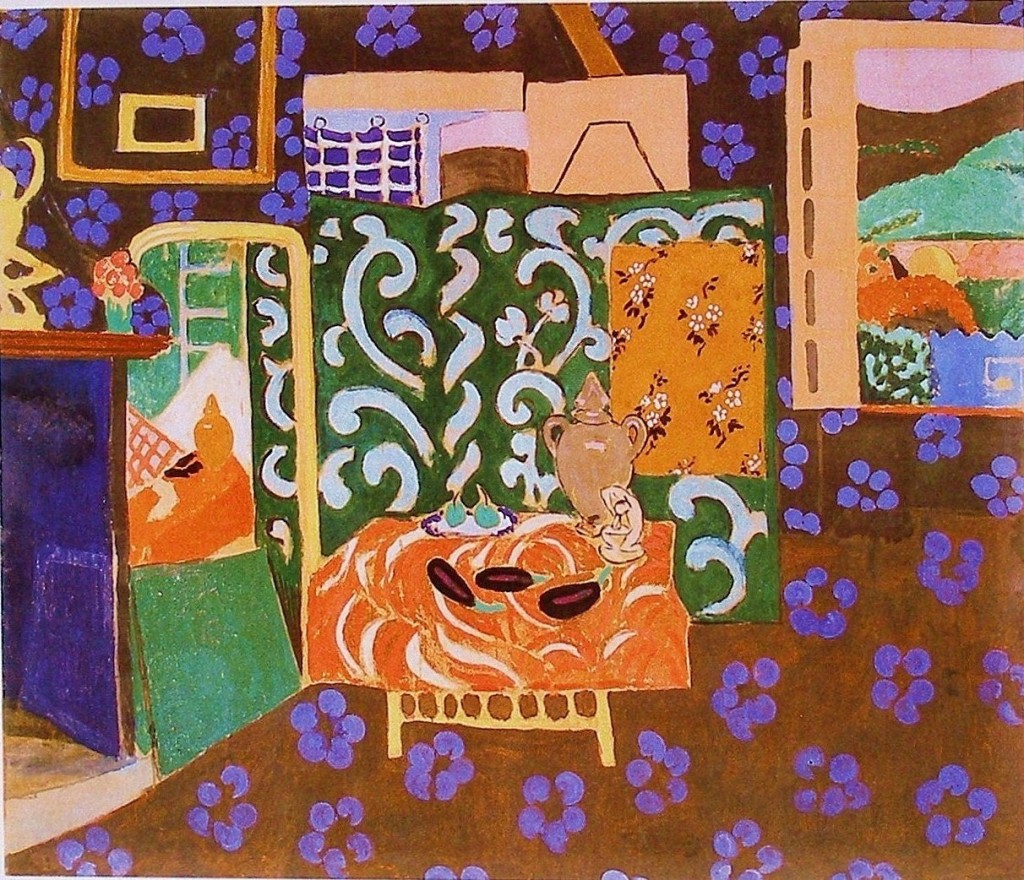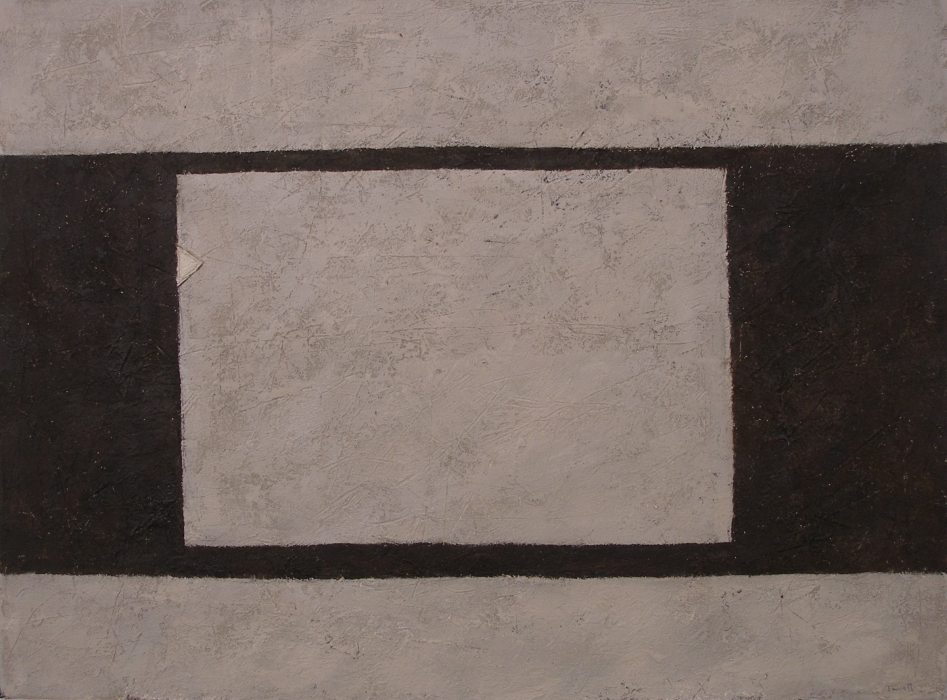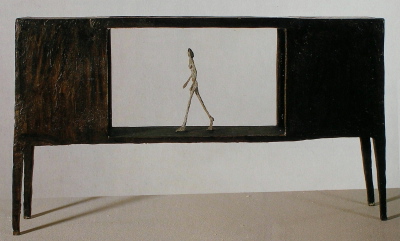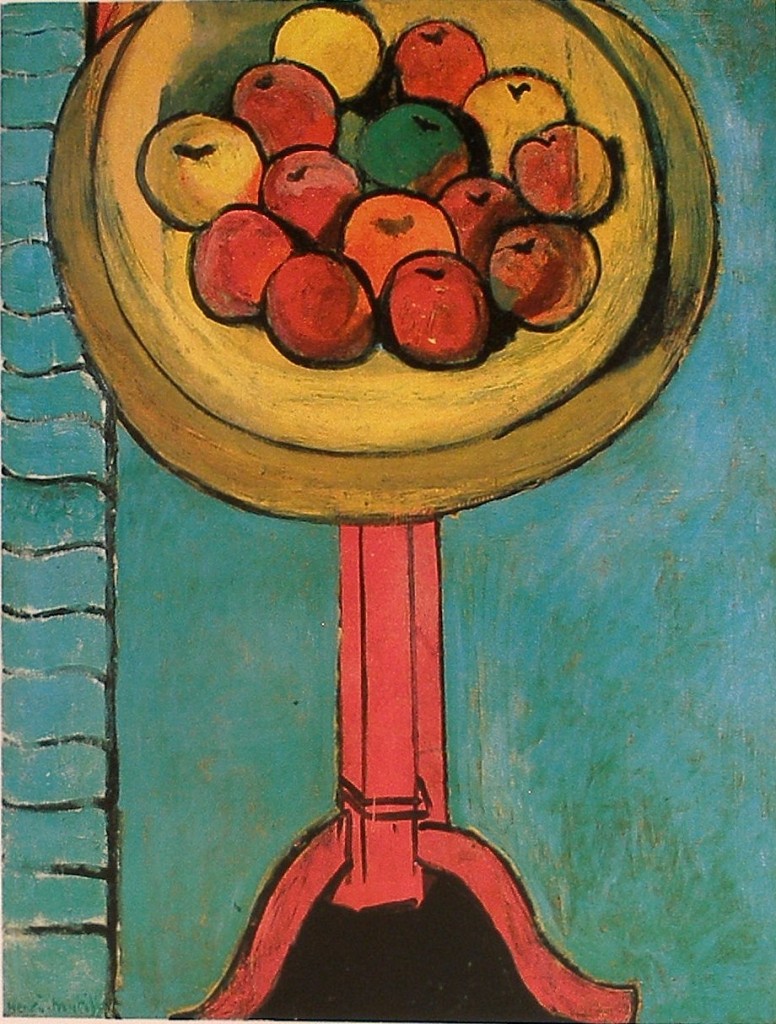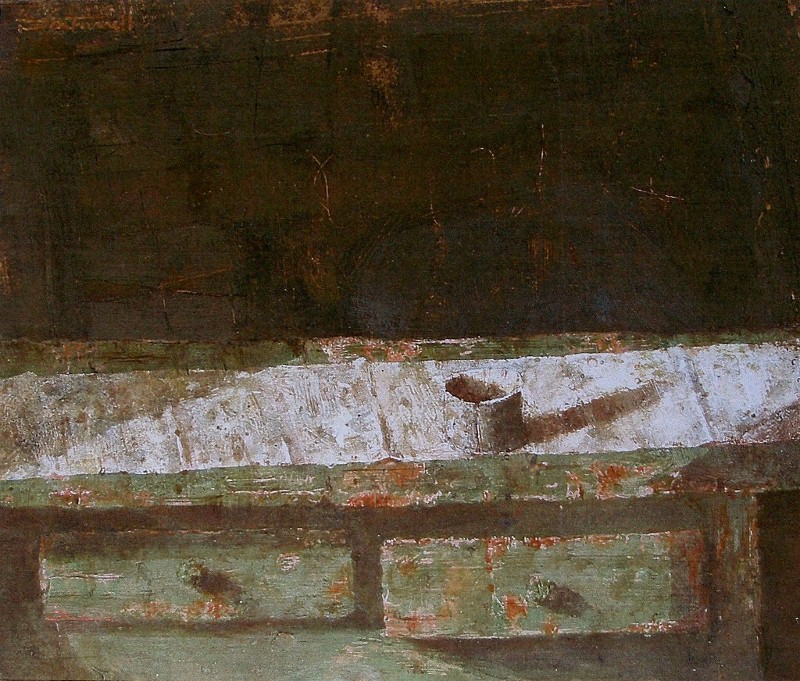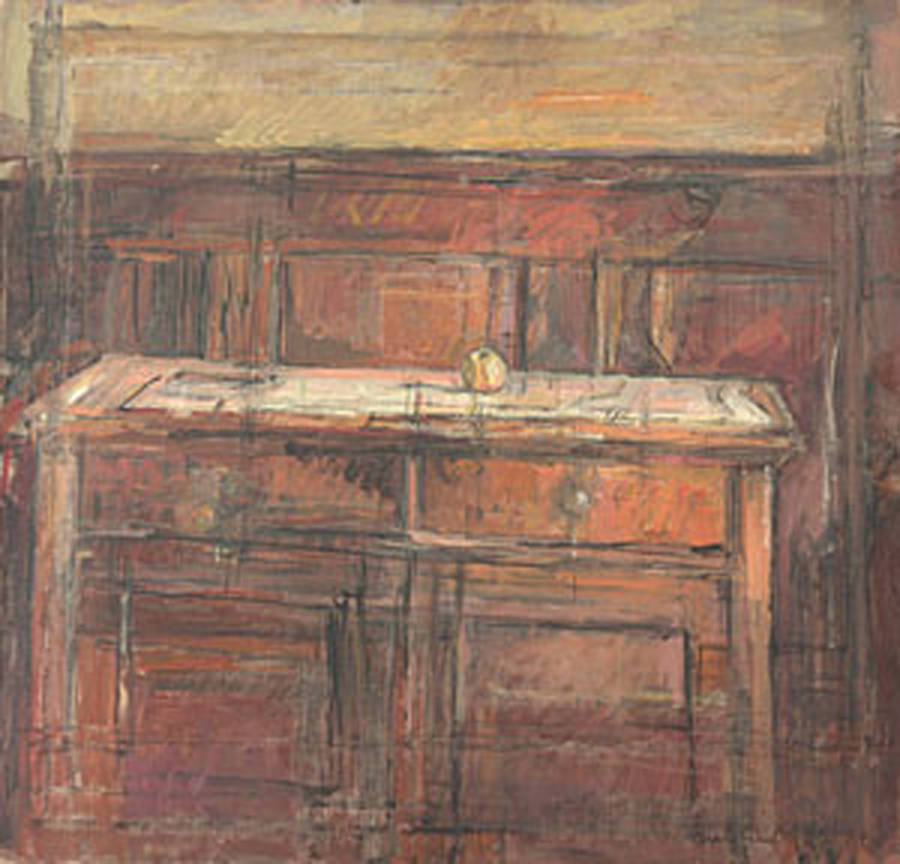This painting is a great example of a great painter permitting another to influence his work. In the Matisse painting below (posted on Oct. 19, 2011), we see how he brought the background, or a spatial plane, in front of the figure’s right shoulder.
Diebenkorn used shadows to achieve the same result. The shadow below her chin seems to be part of the background as well, and I feel the sharp right angle is the key. You can also feel the sense of a spatial plane below her left breast and another beautifully considered right angle on her right arm which relates to the angle under her chin. (Blurring your vision may help)
This sophisticated consideration provides the feeling the figures occupying space.
I must also point out Diebenkorn’s superb integration of the figure’s right arm with the line leading to the bottom of the painting and how this supports her. I also love how her face comes forward, very impressive.
Being aware of these influences can be very beneficial for developing artist’s. Joining with this great tradition is a great way to develop as long as you understand the difference between being influenced and copying. You need to connect to the thought process and knowledge of the artists you choose.


